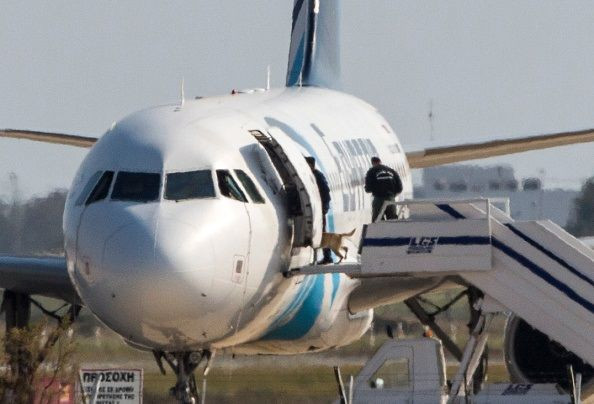EgyptAir Upgraded Security After Past Threats

The Airbus plane that carried the passengers of EgyptAir Flight 804 was victim to previous terror threats. Graffiti that read, “We will bring this plane down,” was scrawled in Arabic on the underside of the plane two years prior to the crash, the New York Times reported Saturday.
The Times described the threat as an “eerie coincidence,” yet its occurrence also highlighted the disturbances and terrorist acts that have occurred on EgyptAir flights in previous years. For instance, a passenger on an EgyptAir flight in March forced a plane to land early, in Cyprus, after he pretended to be wearing a vest with explosives.
Seventeen years ago, EgyptAir Flight 990 crashed en route to Los Angeles from Cairo. It is still unknown if the crash was due to mechanical failure or an act of terror, USA Today reported.
EgyptAir has tried to improve security on its planes by assigning two officers to each flight. These officers assist the flight crew in any passenger emergencies and also monitor the deplaning and boarding processes, including the luggage transfer.
Flight 804 had three security officers onboard — an increase for which the Times could not ascribe a reason. Each of the guards, among the 66 people in total, died in Thursday's crash.
Investigators have not confirmed a reason for the crash, but officials reported evidence of smoke from automatic radio messages sent shortly before airport controllers lost contact, NBC News reported.
“If there is smoke, it means that there is potentially a fire somewhere, but it doesn’t tell us where the fire is, and it doesn’t help us establish whether it is something malevolent or something technical,” Sébastien Barthe, a spokesman for France’s Bureau of Investigations and Analysis, told the Times.
These signals may mean that the crash was a technical malfunction, rather than a terror attack. Interestingly, neither the Islamic State group nor al Qaeda have claimed responsibilty for the crash, contrary to what is commonly done after organized attacks, according to Stratfor, a global intelligence company.
Debris from the crash, including a yellow life jacket and tattered clothes, has been found in the Mediterranean Sea, north of Alexandria, Egypt. The Egyptian military regime released photos of some of the items Saturday.
© Copyright IBTimes 2024. All rights reserved.





















